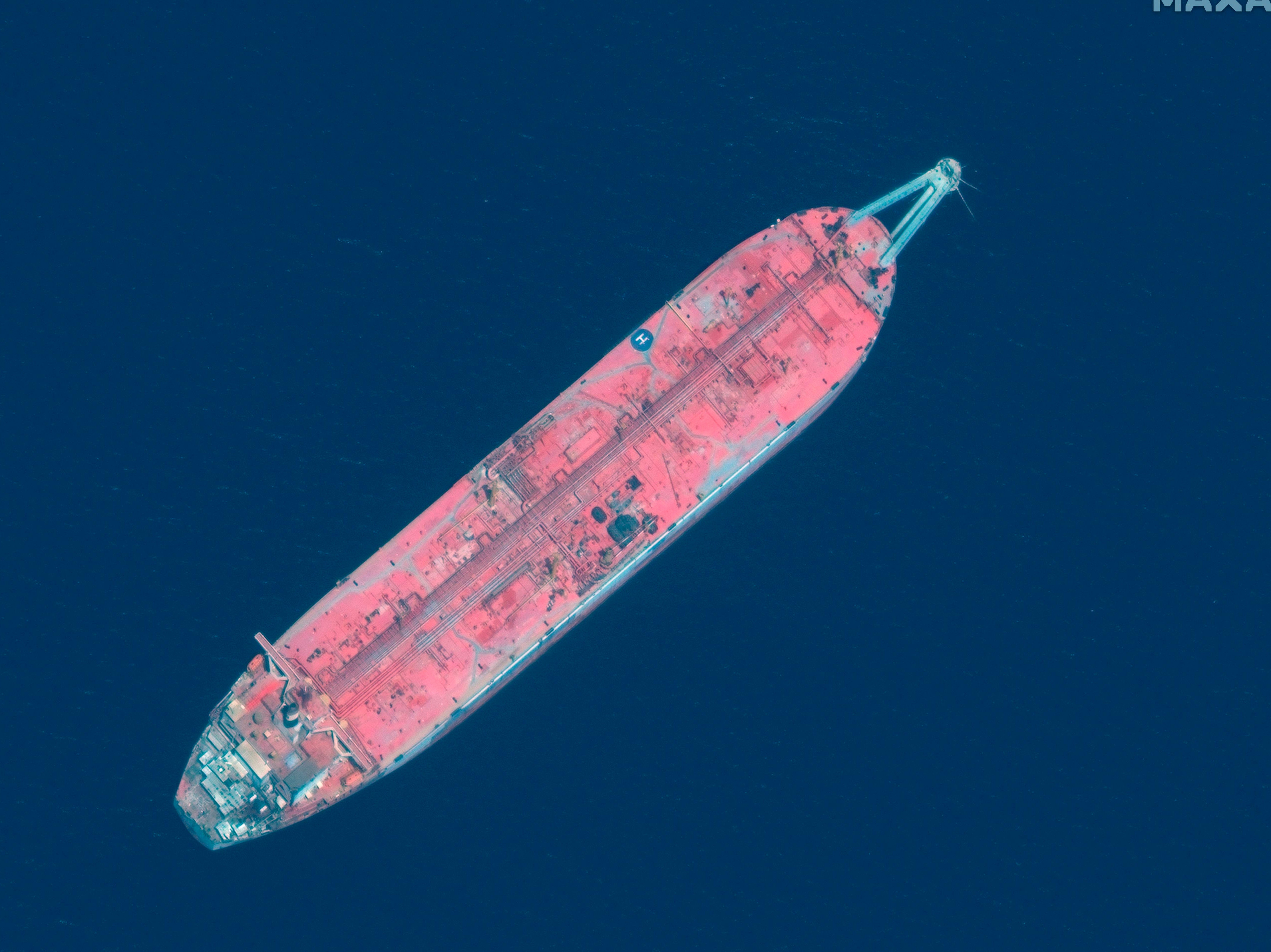Abandoned tanker containing 1 million barrels of oil could cause ‘devastation’ in Red Sea, scientists warn
Decaying vessel contains four times as much oil as the Exxon Valdez spilled in Alaska in 1989

Your support helps us to tell the story
From reproductive rights to climate change to Big Tech, The Independent is on the ground when the story is developing. Whether it's investigating the financials of Elon Musk's pro-Trump PAC or producing our latest documentary, 'The A Word', which shines a light on the American women fighting for reproductive rights, we know how important it is to parse out the facts from the messaging.
At such a critical moment in US history, we need reporters on the ground. Your donation allows us to keep sending journalists to speak to both sides of the story.
The Independent is trusted by Americans across the entire political spectrum. And unlike many other quality news outlets, we choose not to lock Americans out of our reporting and analysis with paywalls. We believe quality journalism should be available to everyone, paid for by those who can afford it.
Your support makes all the difference.An oil tanker which has been abandoned since 2015 is deteriorating, seeping oil and could cause an environmental catastrophe if the 1 million barrels of crude it contains becomes a more serious spillage.
The vessel, called the Safer, is decaying in the Red Sea north of the Yemeni city of Al Hudaydah, where access is controlled by the Houthi faction.
The inactive ship was a storage and offloading unit and currently contains four times as much crude oil as was spilled by the Exxon Valdez in 1989 when 11 million gallons of crude oil went into Alaska's Prince William Sound.
It was the worst oil spill in US history until the Deepwater Horizon oil spill in the Gulf of Mexico in 2010.
The Safer is in a biodiversity hotspot, full of corals and other sea life. Scientists are particularly interested in the corals which are able to thrive in temperatures considerably warmer than many other major reefs.
An oil spill would not only inflict disaster on the natural world, but would severely impact human activity in the area, which supports a significant fishing economy.
A new paper is calling for concerted action to remove the oil from the decaying vessel.
The paper, titled A Closing Window of Opportunity to Save a Unique Marine Ecosystem, is published just weeks after The New York Times reported on November 24 that the Houthis would grant permission to a United Nations team to board the Safer to inspect and repair the vessel in the near future.
“The time is now to prevent a potential devastation to the region's waters and the livelihoods and health of millions of people living in half a dozen countries along the Red Sea's coast," said Dr Karine Kleinhaus, associate professor at the School of Marine and Atmospheric Sciences (SoMAS) at Stony Brook University in New York.
“If a spill from the Safer is allowed to occur, the oil would spread via ocean currents to devastate a global ocean resource, as the coral reefs of the northern Red Sea and Gulf of Aqaba are projected to be among the last reef ecosystems in the world to survive the coming decades.”
She said the reason the coral reefs of the northern Red Sea are unique is because they survive in much warmer waters than today's ocean temperatures, which are becoming too high for most coral to tolerate.
For example, in Australia, over half of the Great Barrier Reef has been significantly degraded due to mass coral bleaching events caused by marine heat waves blamed on the human-caused climate crisis.
The scientists also said the fish living on the reefs off Yemen in the southern Red Sea are a major resource of food for the populations of the region, and the entire sea and its coral reefs are a highly biodiverse and rich ecosystem.
Dr Kleinhaus and her co-authors pointed out that in May 2020 seawater breached the Safer and entered the engine compartment, and news agencies have reported oil spots next to the tanker, indicating likely seepage.
The authors have emphasised the fact that five years is a long advance warning of a decaying tanker poised to degrade to the point of a catastrophic oil leak.
The paper includes projections from a computer model which suggest how the oil would disperse if a major leak begins this winter.
The model indicated the oil will reach much further if the spill occurs now rather than in summer, due to the typical winter currents in that region of the Red Sea.
“A spill now [over winter] will cause much broader and more extensive devastation as a result,” the authors said.
Despite the signs of the Safer's structural deterioration, access to the tanker has yet to be achieved and concrete steps to repair or to prevent an oil spill have not been taken.
The authors said: “Action must be taken by the UN and its International Maritime Organisation to address the threat of the Safer, despite political tensions, as a spill will have disastrous environmental and humanitarian consequences, especially if it occurs during winter.
“With millions of barrels of oil passing through the Red Sea every day, a regional strategy must be drafted for leak prevention and containment that is specific to the Red Sea's unique ecosystems, unusual water currents, and political landscape.”
The research is published in the journal Frontiers in Marine Science.
Join our commenting forum
Join thought-provoking conversations, follow other Independent readers and see their replies
Comments